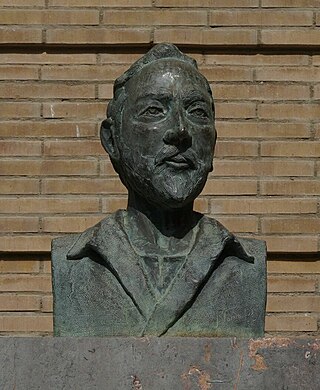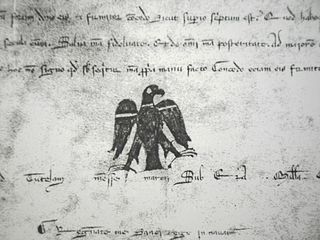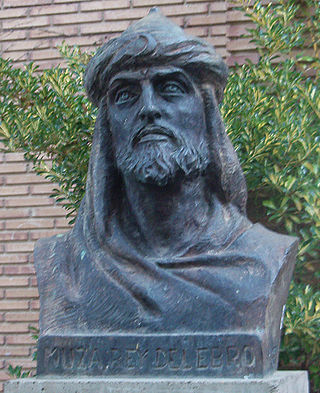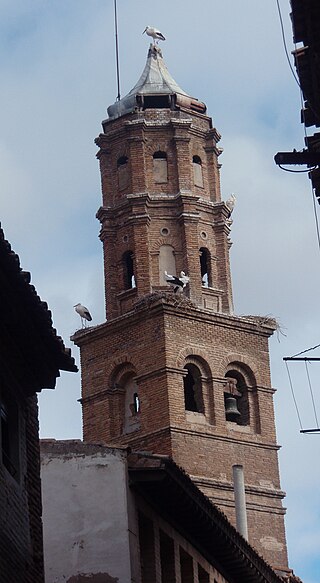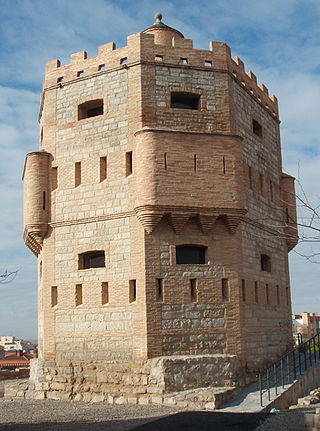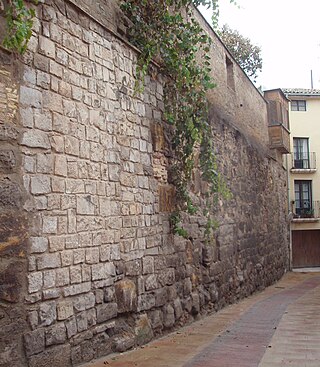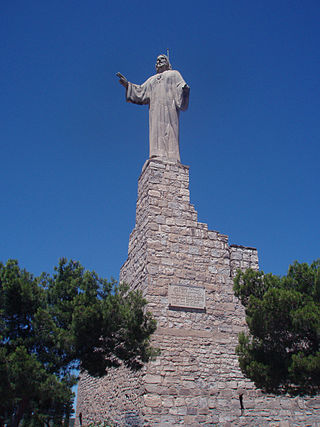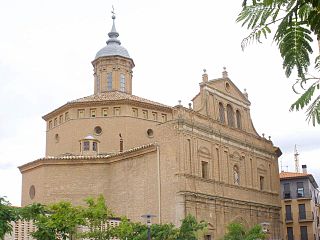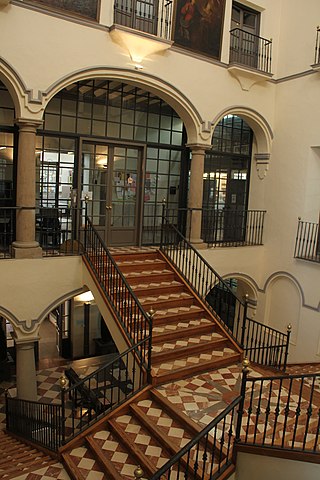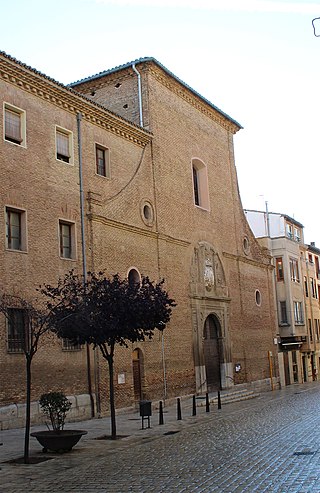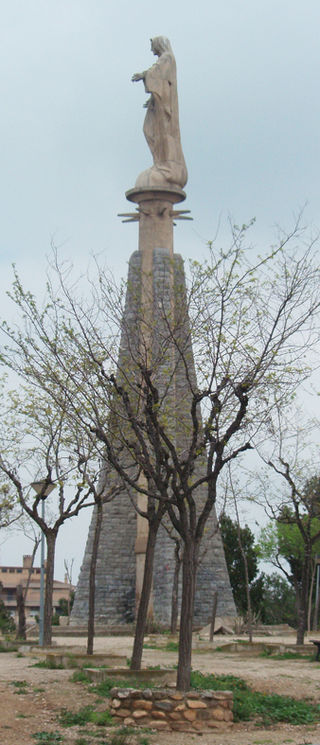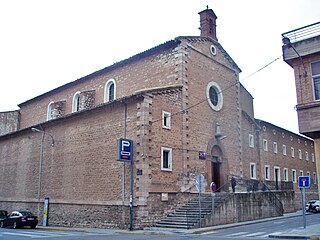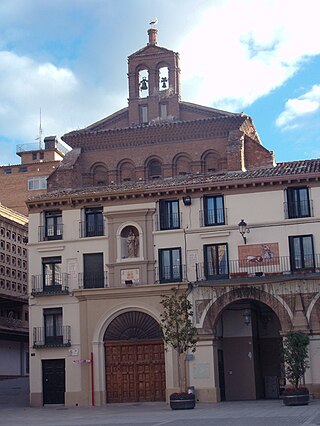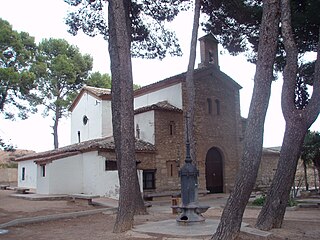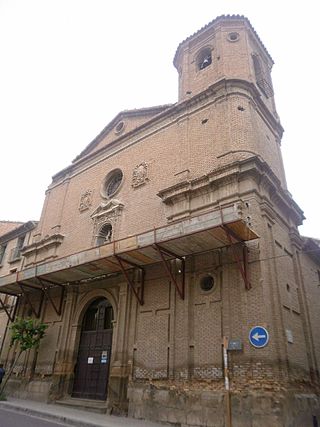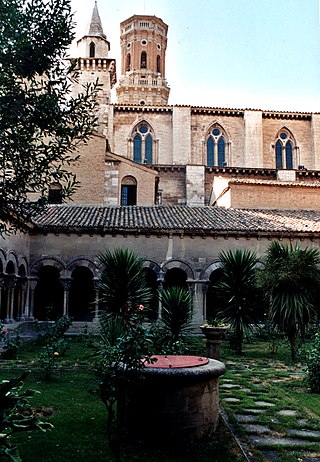17 Sights in Tudela, Spain (with Map and Images)
Legend
Welcome to your journey through the most beautiful sights in Tudela, Spain! Whether you want to discover the city's historical treasures or experience its modern highlights, you'll find everything your heart desires here. Be inspired by our selection and plan your unforgettable adventure in Tudela. Dive into the diversity of this fascinating city and discover everything it has to offer.
Sightseeing Tours in Tudela1. Monumento a Benjamìn de Tudela
Benjamin of Tudela, also known as Benjamin ben Jonah, was a medieval Jewish traveler who visited Europe, Asia, and Africa in the twelfth century. His vivid descriptions of western Asia preceded those of Marco Polo by a hundred years. With his broad education and vast knowledge of languages, Benjamin of Tudela is a major figure in medieval geography and Jewish history.
2. Estatua de Sancho El Fuerte
Sancho VII called the Strong was King of Navarre from 1194 until his death in 1234. He was the son and heir of Sancho VI, whom he followed as the second king to hold the title of King of Navarre. Sancho VII was the first to use the chains of Navarre as his blazon, a symbol that later would become the main one of Navarre, and the last member of the Jiménez dynasty, which had ruled since the 9th century.
3. Busto de Muza
Musa ibn Musa al-Qasawi (Arabic: موسى بن موسى القسوي) also nicknamed the Great ; died 26 September 862) was leader of the Muwallad Banu Qasi clan and ruler of a semi-autonomous principality in the upper Ebro valley in northern Iberia in the 9th century.
4. Iglesia de San Nicolás de Bari
The church of San Nicolás de Bari in Tudela (Navarre) was one of the most outstanding Romanesque temples in the city, whose existence dates back to the first half of the twelfth century. It was rebuilt in the eighteenth century with its current baroque factory. It is located between San Nicolás and Serralta streets in the Old Town of Tudela. Sancho VII the Strong was buried here, although two years later he was permanently transferred to Roncesvalles.
5. Torre Monreal
The Torre Monreal is a tower, traditionally considered to be of Arab origin, located on a hill southwest of the city of Tudela (Navarre), next to the Lourdes neighborhood. According to the archaeological excavations carried out in its surroundings and inside, it would belong to a watchtower to control the possible arrival of enemies in that area. It is the only watchtower in Tudela that has survived to the present day. It stands on a hill that dominates the city in the opposite direction to the Cerro de Santa Bárbara, where the Alcazaba or Castle of Tudela was located. In the past, this hill must have been known as Monte del Rey or Monte Real, from which it derives its name.
6. Puente del Ebro
The Ebro Bridge in Tudela (Navarre) is a medieval Spanish stone bridge, with a length of 360 m that is composed of 16 piers and 17 arches, all uneven. Its importance is intrinsic to the city, whose history is articulated around the passage of the Ebro River.
7. Murallas - S. IX
The walls of Tudela were the fortification, of Muslim origin, which defensively surrounded the city of Tudela (Navarra), along the perimeter that now makes up the old town of the city. A first wall was built at the beginning of the ninth century, with the fortification of Amrùs Ben Yusuf, which surrounded a first enclosure, the founding. This first wall reached the Midovilla ravine, which initially served as a natural defensive pit. With demographic growth, especially at the time of the Banu Qasi, this wall was extended during the first half of the ninth century until reaching the following natural pit, the Queiles River. This corresponds to the main wall of Medina Tudelana, which was preserved intact until the 16th century. After the reconquest of Tudela in 1119, the Moors were transferred to extramurous, building a new neighborhood subsequently known as La Morería; This new neighborhood was immediately protected by a new fortification: the walls of the Morería.
8. Mirador del Cerro del Castillo
The monument to the Sacred Heart of Jesus of Tudela (Navarra) in Spain, is a great statue built in honor of Jesus of Nazareth, «erected as a spiritual lighthouse on the top of the Cerro del Castillo, from which its protection extends to the protection of the city and the entire region ». The image of the heart of Jesus is a fundamental piece of the silhouette of the city. It was located on what was the main tower of the old castle of Tudela and, subsequently, Hermitage of Santa Barbara. The heart of Jesus has its counterpoint on the other side of the city with the statue dedicated to the heart of Mary.
9. Iglesia de la Compañía de María
The church of the Company of Mary, or La Enseñanza, in Tudela (Navarre), "one of the best architectural ensembles of the eighteenth century in the Navarrese Ribera and the only essentially Baroque monument in the area, was built in the second quarter of the aforementioned century, from 1732, being blessed in 1742". It is located in the Plaza de San Juan and Calle de la Enseñanza, a name linked to this religious community. In addition to the church, the only original thing that survives, the Company of Mary Our Lady has a convent and school, both renovated or rebuilt later.
10. Palacio de Marqués de Huarte
The palace of the Marquis of Huarte de Tudela (Navarre) is a splendid Baroque palace from the mid-eighteenth century, it has two facades, on Mercadal Street and on the Herrería Street. It is located in the Old Town of the city. It currently houses the Yanguas and Miranda Library and the Municipal Archive of Tudela.
11. Iglesia de San Jorge
The church of San Jorge el Real in Tudela (Navarre) is in the Jesuit Mannerist style of the seventeenth century. It is located in Plaça Mercadal. It was the chapel of the Jesuit convent until the expulsion of the Society of Jesus in 1767, then it became the property of the Crown, which is why it was called San Jorge el Real and for which the coat of arms of Charles III appears on its façade. Later it became a parish.
12. Monumento al Corazón de María
The Heart Monument of María de Tudela (Navarra) is a great statue built in honor of María in the mid -twentieth century in a hill in front of the Monreal Tower, near the Lourdes neighborhood. The heart of Mary has her counterpoint on the other side of the city, on the hill of Santa Barbara, with the monument dedicated to the heart of Jesus.
13. Iglesia y convento de los Capuchinos
The Capuchin Convent and Church of the Divine Shepherdess of Tudela (Navarre) is a convent and church of the Capuchin order of the late nineteenth century, located on the street of the same name in the current Tudela Extension.
Wikipedia: Iglesia y convento de los Capuchinos (Tudela) (ES)
14. Iglesia de Santa María de Gracia
The parish church of Santa María de Gracia de Tudela (Navarre) is a Gothic-Renaissance church of the sixteenth century that belongs to the Hospital of the same name and is located between the current Plaza Nueva and Don Miguel Eza street in Tudela.
15. Ermita de Santa Cruz - El Cristo
The hermitage of Santa Cruz de Tudela (Navarre) is a hermitage that was built in the twelfth century by the monks of Siege and located 1 km north of the Old Town of Tudela, on the right bank of the Ebro River. The first hermitage also held the title of church and basilica. There was a brotherhood in it, called Ballesteros, which may have been founded in 1235. The current building of the hermitage is from the mid-nineteenth century. It is the headquarters of the brotherhood of the Christ, which is why it is also called Ermita del Cristo.
16. Iglesia del Carmen
The church and convent of Carmen de Tudela (Navarre) is a temple of the late sixteenth century, in Mannerist style, located on the corner of Gayarre and Carmen Alta streets in the Old Town of Tudela, with an exit on the latter street.
17. Catedral de Santa María
The Cathedral of Santa María de Tudela (Navarre) is a late Romanesque temple, inspired by Cistercian architecture, of large dimensions, which began to be built at the end of the twelfth century during the reign of Sancho VI the Wise, passing the baton to his son Sancho VII the Strong, who in turn passed it on to his nephew Theobald I. He used some of the foundations of the Great Mosque of Tudela. As the orientations of the two temples did not coincide, the mosque was demolished to build the new temple and only some of its foundations were used.
Share
How likely are you to recommend us?
Disclaimer Please be aware of your surroundings and do not enter private property. We are not liable for any damages that occur during the tours.
